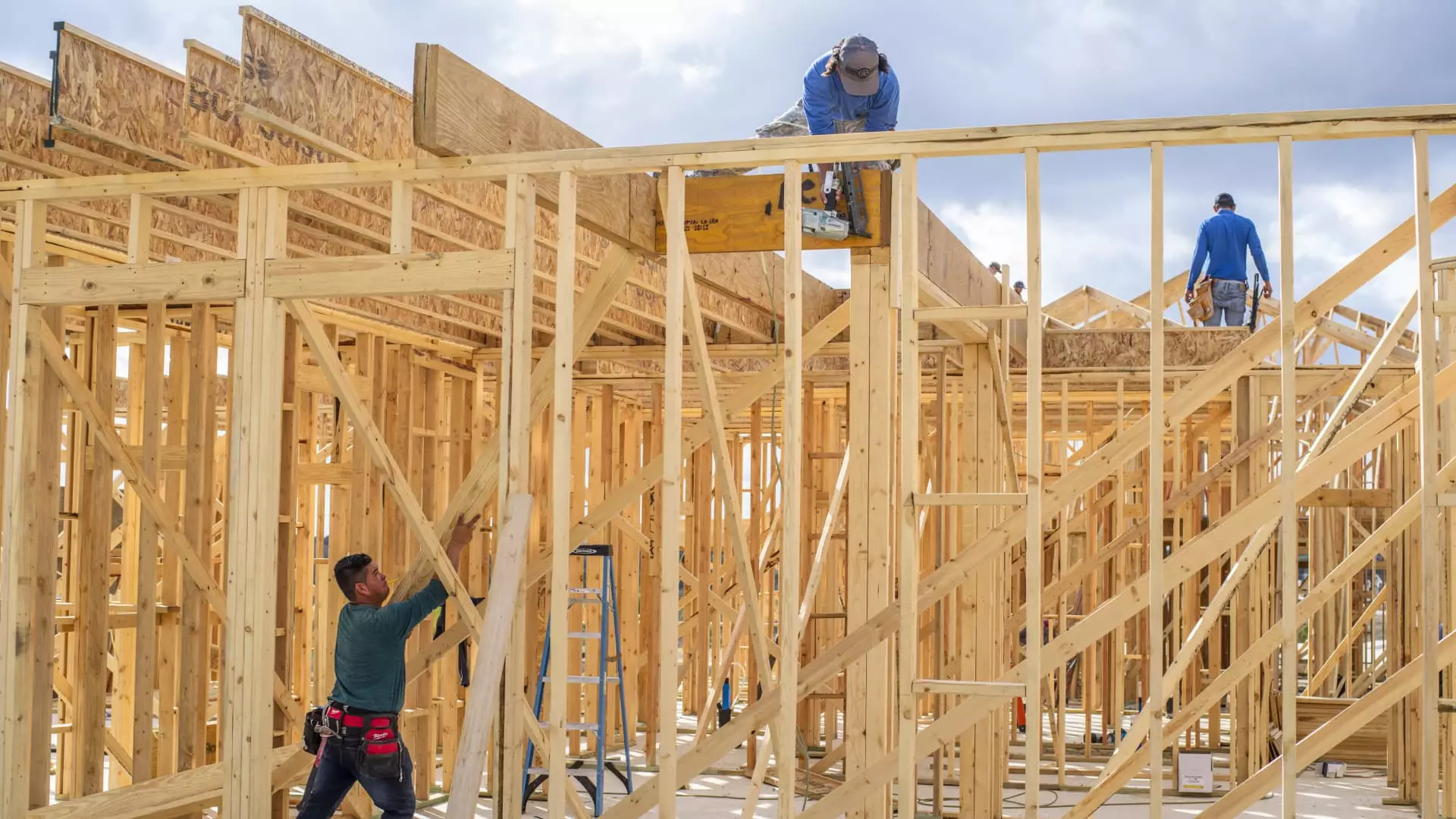In February 2025, the sentiment among single-family homebuilders in the United States experienced a notable downturn, reaching its lowest levels in five months. The National Association of Home Builders’ Housing Market Index (HMI) fell sharply, signaling widespread concern regarding rising costs attributed to tariffs and economic uncertainties. With an index reading of 42, which is indicative of pessimism since it falls below the neutral threshold of 50, the builder community appears to be in a precarious position. For context, just one year prior, in February 2024, the index stood significantly higher at 48.
This decline, articulated by NAHB Chairman Carl Harris, reflects not only immediate cost concerns but a broader anxiousness about regulatory frameworks that could impact future development. Builders, while hopeful for favorable policy adjustments, recognize that ongoing uncertainties may necessitate recalibrating their expectations for the spring market and beyond.
Analyzing the components of the HMI reveals deeper issues at play. The current sales conditions component fell by four points to 46, while potential buyer traffic saw an even steeper three-point drop to 29. However, the most alarming statistic came from the six-month sales expectation outlook, which plummeted 13 points to reach a low of 46. This trajectory suggests that builders are bracing for a slowdown in demand as they head into a traditionally active season.
The underlying reasons for this dip are multifaceted. Elevated mortgage rates—hovering above 7% for the key 30-year fixed mortgage—compounded by rising home prices, have severely impacted affordability. Many potential buyers find themselves priced out of the market, leading to a constriction in the pool of active purchasers.
Another significant contributor to the decline in builder sentiment is the uncertainty surrounding tariffs, particularly those affecting essential materials sourced from international suppliers. According to the NAHB’s chief economist, Robert Dietz, a substantial part of the inventory—32% of appliances and 30% of softwood lumber—is contingent on international trade. The possibility of tariff-induced price increases has created an environment of apprehension among builders about their burgeoning costs, further stifling development and investment opportunities.
This environment of elevated costs could have far-reaching implications. If tariffs are enacted, builders may be forced to pass costs onto consumers, ultimately exacerbating affordability issues.
Further complicating these dynamics is a persistent inflationary environment, coupled with the Federal Reserve’s actions to control interest rates. Although the Federal Reserve has moved towards lowering short-term rates, the impact on mortgage rates has been minimal, resulting in an ongoing challenge for homebuyers. As Ryan Marshall, CEO of PulteGroup, noted in a recent earnings report, elevated interest rates are placing significant pressure on buyer demand, and as potential homeowners grapple with affordability constraints, the housing market faces potential stagnation.
Interestingly, the share of builders adjusting prices downward has also seen a decline, falling to 26% in February, the lowest since May 2024. This suggests that builders might be reaching a point of diminishing returns on price reduction strategies, as many prospective buyers have already deemed themselves priced out of the market.
Given these challenging conditions, the landscape for single-family homebuilders appears fraught with obstacles. As the market progresses into the spring, the anticipated uptick in activity may be dampened by the cumulative effects of high mortgage rates, cost uncertainties due to tariffs, and the diminishing effectiveness of incentives.
Moreover, the reported pullback in buyer demand speaks volumes, indicating that builders may need to rethink their strategies. An overly optimistic inclination towards discounts and incentives may no longer be a viable approach in an increasingly cost-driven market. As builders navigate this landscape, finding effective ways to attract buyers will be crucial if they hope to stabilize or even grow their market presence in the challenging times ahead.
The evolving sentiment among homebuilders reflects a complex interplay of economic, regulatory, and market forces that will continue to shape the housing landscape in the near future. The need for adaptive strategies is vital as the industry faces these ongoing challenges.

